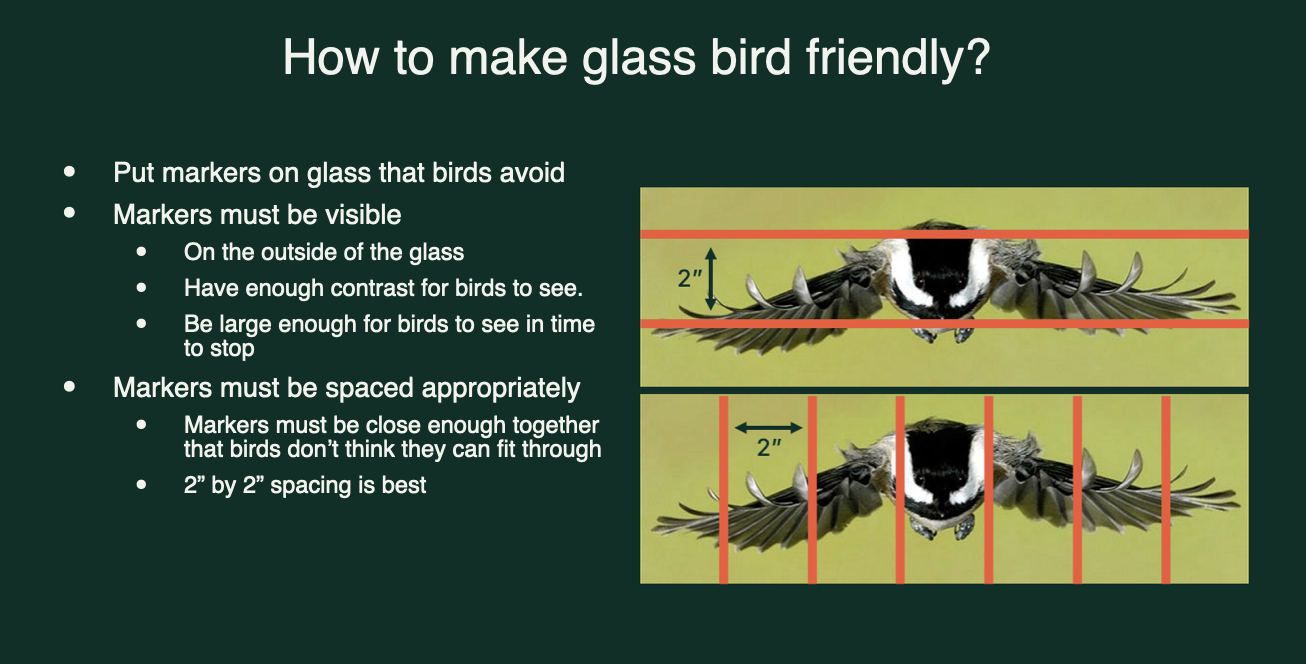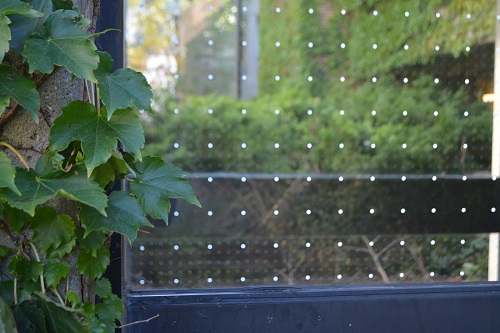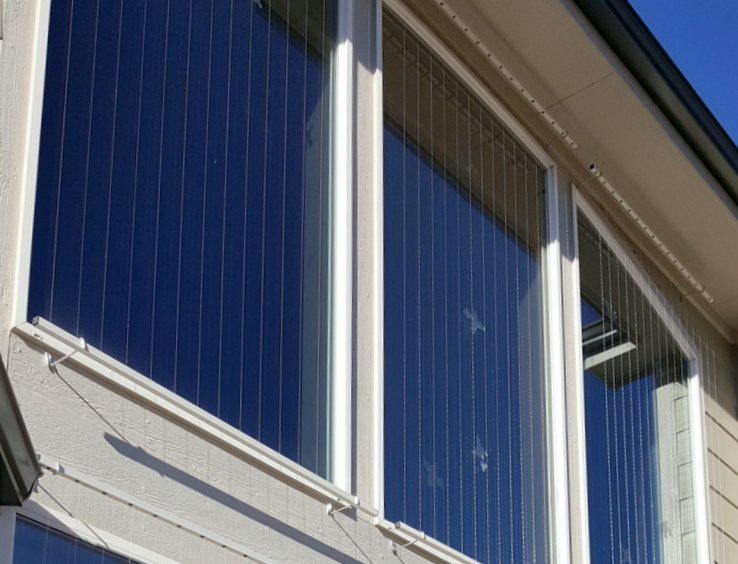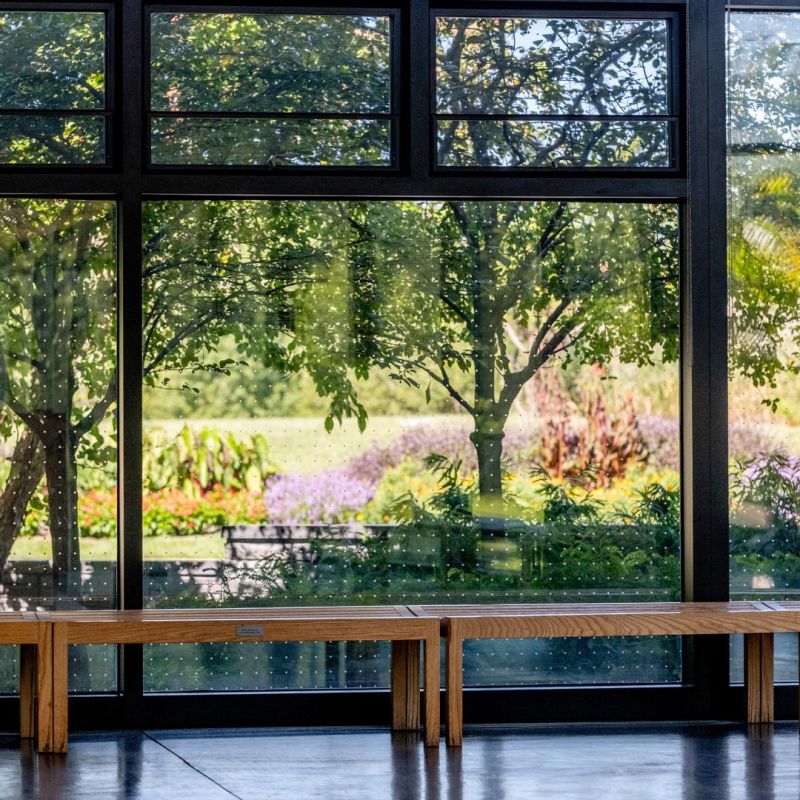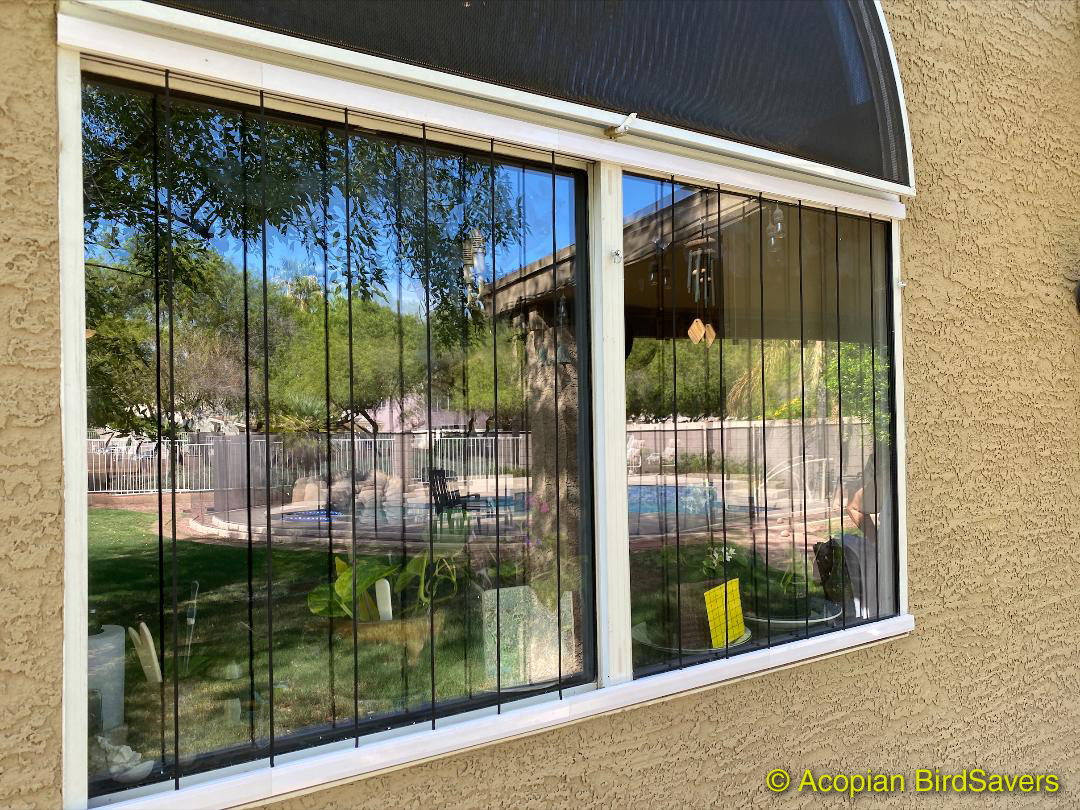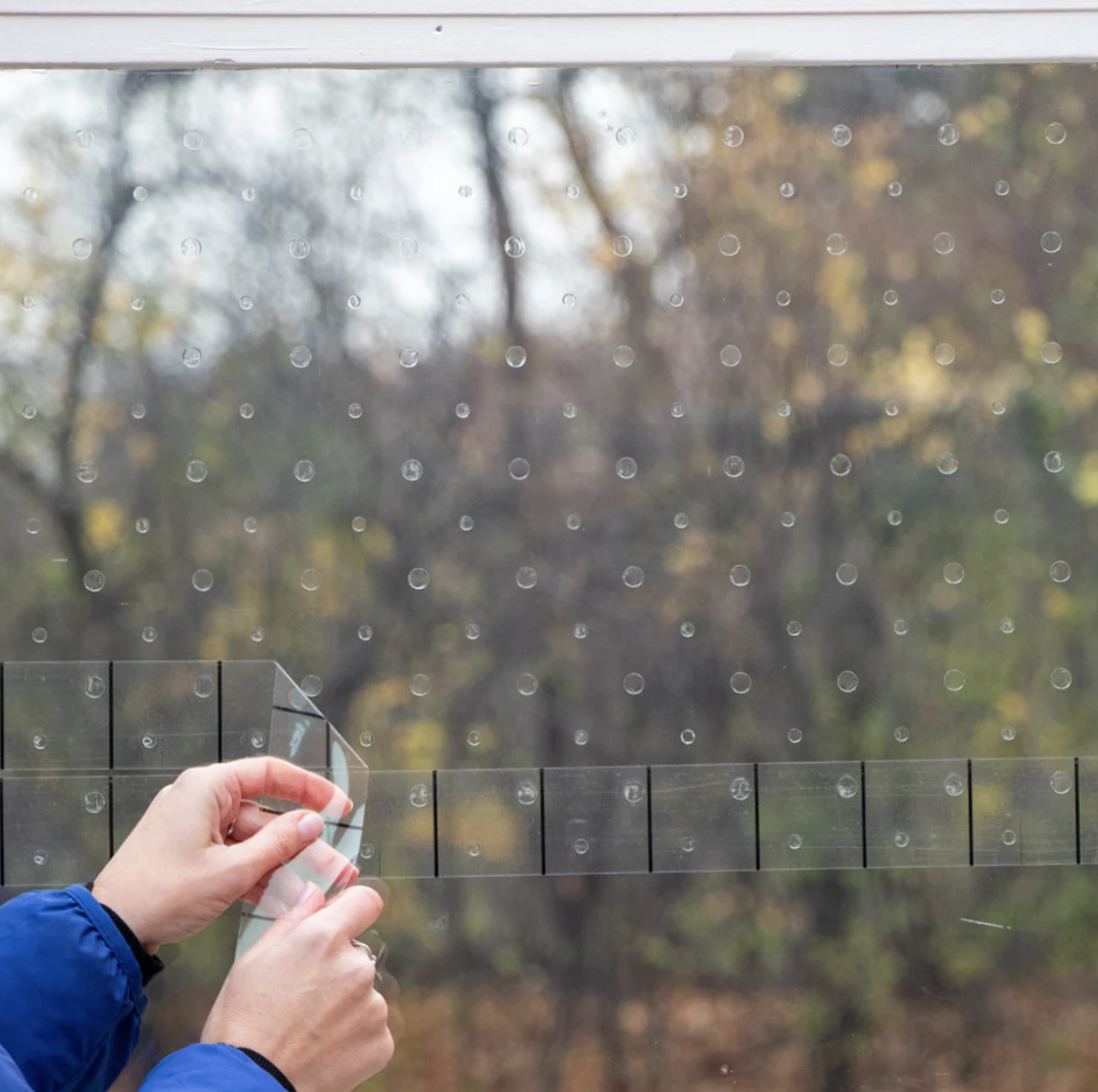Window Strike Prevention
Keeping Birds Safe
A Deadly Illusion
Each year, millions of birds are killed by a threat hidden in plain sight: windows. Glass surfaces pose a serious danger to birds, who cannot perceive glass the way humans do. Whether flying between trees, evading predators, or simply looking for food or rest, birds often mistake glass reflections for open sky or habitat and collide at full speed.
Beyond the birds that die instantly, research shows that less than half of birds stunned or injured in window collisions survive, even with expert rehabilitation care. Factoring in this new data pushes the estimated death toll to well over 1 billion birds that may die each year from building strikes in the U.S.
The Impact
“Bird populations across the globe are in steep decline, in part due to collisions with buildings,” explains Dustin Partridge, PhD, of NYC Bird Alliance, formerly NYC Audubon. “Unfortunately, our work shows population-level declines are not something we can fix with rehabilitation. If we don’t address artificial light and glass, we’ll continue to lose over a billion birds in the US annually — a toll our ecosystems can’t sustain.”
Simple Solutions Can Save Birds
Birds need clear visual cues to understand that a surface isn’t a safe flyway. Fortunately, there are proven, effective ways to help. Read on to find out more.
Make Glass Visible to Birds
- Add bird safe products like tape to the outside of windows to make them visible to birds (spacing matters — 2” vertical or 4” horizontal spacing is ideal)
- Hang cords or “Acopian Birdsaver” curtains on the outside of glass
- Use external insect screens to break reflections and soften impact
- Close blinds or curtains when windows aren’t in use
- Move indoor plants away from window perimeters
- Install window-mounted feeders to slow bird approach speeds and keep birds close to the glass where collisions are less severe
Learn More with Our Experts
Bedford Audubon is committed to helping our community protect birds from preventable threats like window collisions. We’re planning several upcoming workshops and presentations to help you identify risks at your home or workplace — and show you how easy it can be to make a difference.
Email us to find out more about our upcoming workshops: info@bedfordaudubon.org
Whether you’re a homeowner, business owner, or even a renter, there are simple, affordable, and beautiful ways to make your glass bird-safe. Together, we can reduce one of the leading causes of bird mortality — and create a safer environment for our feathered neighbors.
Gallery
Here are images of proven methods to make windows safer for birds, starting with an excellent overview of the elements necessary to make windows bird friendly from the American Bird Conservancy (below).

